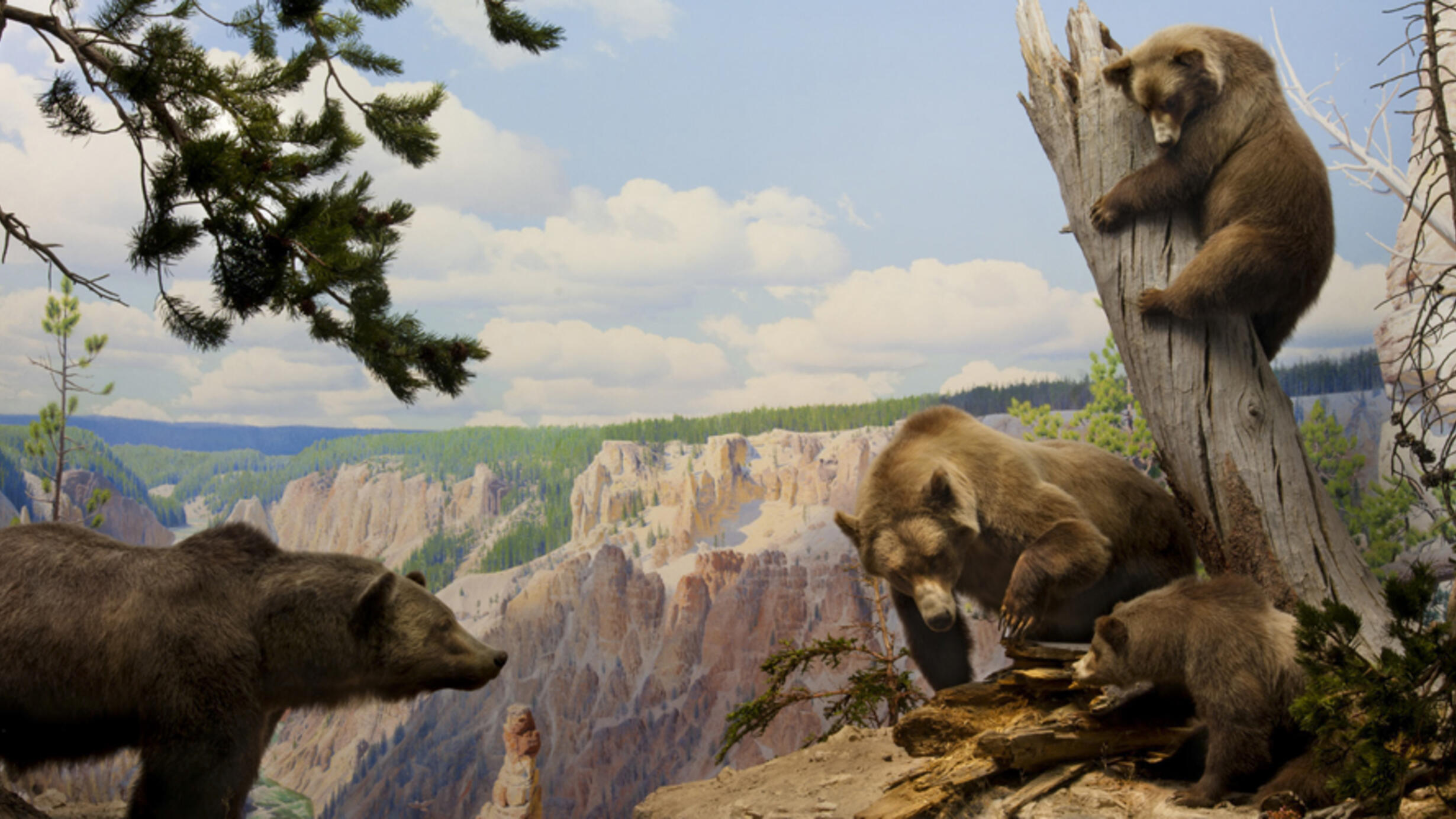Grizzly Bear
Part of Hall of North American Mammals.

September Morning , Yellowstone National Park, Wyoming
You’d be wise to avoid stumbling upon this scene in the wild. Grizzly bears are unpredictable and may become aggressive if interrupted while eating or tending cubs. This mother is doing both: she’s showing her six-month-olds how to tear open a rotted pine for ants and grubs to eat.
Grizzly bears are actually the same species as the brown bears behind you. Members of this species can grow to very different sizes depending on where they live. The nickname “grizzly” comes from the grizzled, or silver-tipped, hairs on their backs and shoulders.
Yellowstone Canyon and Lower Falls
Established in 1872, Yellowstone was the first national park in the United States. Grizzly bears survive largely in remote, protected regions like this.
Still, Yellowstone has not always been a safe haven for grizzlies. Until 1886, killing big game in the park was permitted, even encouraged. After hunting was prohibited, grizzly bears became popular attractions when they fed at the park’s dumps—but this was unsafe for both tourists and bears. After the last dump closed in 1971, the bears resumed their backcountry diet and now rarely attack humans. Still, the balance between recreation and conservation remains delicate in Yellowstone—and wherever people and grizzlies coexist.